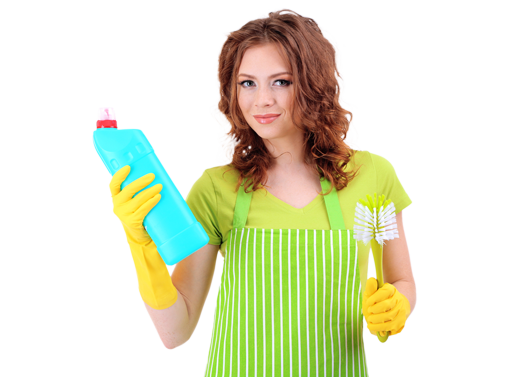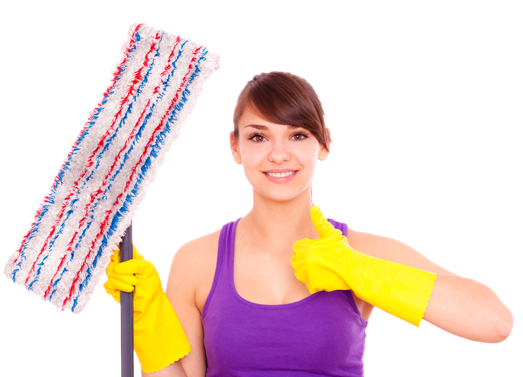The Definitive Curtain Cleaning Handbook
Posted on 08/09/2025
The Definitive Curtain Cleaning Handbook
Wondering how to keep your curtains looking as fresh and beautiful as the day you bought them? Welcome to the Definitive Curtain Cleaning Handbook, your go-to guide for all things related to curtain cleaning, maintenance, and care. From washing delicate drapes to battling stubborn stains and preventing dust build-up, this all-in-one resource covers expert methods, DIY tricks, and essential advice for prolonging the life of your curtains.
Why Is Proper Curtain Cleaning Important?
Curtains are more than just decorative window dressings; they play a crucial role in the atmosphere and air quality of your home. Because they act as air filters, catching dust, allergens, and even bacteria, dirty curtains can adversely affect your indoor environment--and even your health.
- Enhance your home's aesthetic by keeping fabrics bright and fresh.
- Extend the lifespan of your curtains by preventing fabric deterioration from grime and UV exposure.
- Improve air quality by eliminating trapped dust, pollen, and odors.
In this comprehensive curtain cleaning manual, you'll discover various cleaning methods to tackle everything from light dust to deep-set stains, and expert advice for all curtain types.

Know Your Curtains: Fabric Types & Care Requirements
Before you start cleaning, identify the fabric and care label instructions. Each curtain material, whether it's cotton, linen, silk, velvet, or synthetic blends, will have unique cleaning and maintenance requirements. Always check the manufacturer's care label before proceeding.
Common Curtain Fabrics
- Cotton and Linen: Durable and easy to wash, but may shrink if not handled properly.
- Polyester and Synthetic Blends: Resistant to wrinkles and shrinking; most can be machine washed.
- Silk: Delicate and luxurious; requires gentle, often professional cleaning.
- Velvet: Heavyweight; often needs steam cleaning or dry cleaning to avoid damage.
- Sheers and Lace: Fine, fragile fabrics; best washed by hand or on a gentle cycle.
Tip: If in doubt, spot test a concealed area before applying any cleaning solution to the entire curtain.
Essential Tools and Supplies for Curtain Cleaning
Gather these basic tools and supplies for effective curtain care:
- Vacuum cleaner with soft brush attachment
- Ladder or sturdy step stool for easy removal
- Mild laundry detergent or specialized fabric soap
- Microfiber cloths and soft sponges
- Spray bottle for spot cleaning
- Steamer or iron for removing creases
- Laundry bags for washing delicate items
Stay prepared! Having the right tools on hand simplifies routine maintenance and ensures gentle, thorough cleaning.
Cleaning Curtains: Step-by-Step Methods
From regular dusting to deep cleaning, you'll need a tailored approach for different curtain types and soils. Here are the best ways to clean curtains for long-lasting freshness and beauty.
1. Routine Care & Dust Removal
Between washes, it's crucial to remove surface dirt and dust to prevent build-up:
- Use a vacuum cleaner with a gentle brush attachment to regularly sweep both sides of the curtain. Start from the top and work your way down.
- Shake curtains outdoors to eject loose dirt and allergens.
- Use a lint roller for quick touch-ups, especially on pet hair.
2. How to Wash Curtains at Home
Machine Washing Curtains
- Check labels to confirm if your curtains are machine washable.
- Unhook and remove any metal hooks, rings, or weights to protect your machine and fabric.
- Place curtains in a mesh laundry bag for added protection--a must for sheers or lace.
- Choose a gentle cycle, cold water, and a mild detergent.
- Remove immediately after washing to prevent wrinkles and hang to air dry--avoid direct sunlight to stop colors from fading.
Hand Washing Curtains
- Fill a bath or large tub with lukewarm water and a small amount of fabric-appropriate detergent.
- Gently agitate the curtains--don't wring or twist delicate fabrics.
- Rinse thoroughly with cool, clean water.
- Squeeze (not twist) excess water, or press between towels, and hang to dry.
Steam Cleaning Curtains
- Hang curtains and use a handheld garment steamer, working from top to bottom.
- For thick or heavyweight drapes, steam small sections at a time to ensure even cleaning and avoid water spots.
- Always use the recommended water level and steam setting.
Dry Cleaning Curtains
- For delicate textiles like silk or velvet, professional dry cleaning is safest.
- Remove all hardware and clearly label especially valuable or unique curtains for extra care.
3. How to Remove Tough Stains From Curtains
Even with careful routine cleaning, accidents happen. Here's how to treat spills, stubborn stains, and mildew on your curtains:
- For grease stains: Sprinkle cornstarch or baking soda on the spot, let sit for 10-15 minutes, then brush off and gently blot with a damp cloth.
- For coffee or wine spills: Blot (do not rub) immediately with a clean, dry towel. Mix one-part white vinegar to two-parts water and gently dab onto the stain; launder as usual.
- Mildew and mold: Take curtains outside and brush away visible spores. Soak in a solution of water and mild bleach (check care instructions first), rinse thoroughly, and dry in the sun if possible.
- Ink or marker stains: Dab rubbing alcohol on the area with a cotton swab, starting from the edges and working inward. Rinse thoroughly before washing.
Special Tips for Different Curtain Types
Sheer and Lace Curtains
- Hand wash separately in cool water using a gentle detergent.
- Never wring out delicate fabrics--roll in a towel to absorb excess water.
- Hang or lay flat to dry out of direct sunlight to prevent yellowing.
Velvet and Heavy Curtains
- Use a vacuum with a soft brush for regular cleaning.
- Spot-clean using a damp cloth with a special velvet or upholstery cleaner.
- For large or heavily soiled drapes, hire a professional curtain cleaner.
Blackout and Thermal Curtains
- Spot-clean with a mild soap solution. Avoid machine or hand washing, which could damage the special lining.
- Do not iron blackout lining directly; use a steamer or steam setting while hanging.
How Often Should You Clean Your Curtains?
Regular curtain maintenance is key to keeping your home clean and healthy. Here's a suggested schedule:
- Weekly: Vacuum or dust curtains to prevent dust accumulation.
- Monthly: Spot-clean areas exposed to hands, pets, or frequent contact.
- 6-12 Months: Deep clean by washing, steaming, or dry cleaning for most typical homes.
- Allergy or pet owners: Clean more frequently for optimal air quality.
Preventative Curtain Care & Longevity Tips
- Rotate curtains between rooms to even out sun exposure and wear.
- Consider lining curtains to protect against sun fading and dirt.
- Install sturdy rods and hooks for even hanging and easy removal.
- Open windows regularly to reduce moisture and prevent mildew growth.
Professional Curtain Cleaning Services: When to Call the Experts
While DIY curtain cleaning is ideal for routine care, some situations call for expert intervention:
- If curtains are made from sensitive fabrics (silk, velvet, hand-embroidered, antique textiles).
- When cleaning large, cumbersome drapes or those with complex linings.
- For persistent stains or extensive mold/mildew issues.
Professional cleaners possess commercial-grade equipment and specialized knowledge to ensure a thorough, safe clean--helping preserve your curtains' beauty for years.
Common Curtain Cleaning Mistakes to Avoid
- Ignoring care labels and washing instructions.
- Using harsh detergents or bleach on delicate fabrics.
- Washing curtains with hooks, rings, or other hardware attached.
- Oversaturating fabric--can lead to shrinking or damage.
- Drying curtains in direct sunlight--can cause fading and brittleness.

Frequently Asked Questions about Curtain Cleaning
Can all curtains be machine washed?
Not all curtain fabrics are safe for machine washing. Cotton, linen, and most synthetics are often machine-friendly, but always check the label first. Delicate fabrics like silk and velvet usually require hand or professional cleaning.
How do I prevent wrinkles after washing curtains?
Remove curtains from the washing machine immediately and shake them out. Hang them while damp to allow wrinkles to naturally drop. For stubborn creases, use a steamer or iron on a low heat, if allowed.
Should I iron or steam my curtains?
Most curtains benefit more from gentle steaming, which relaxes fibers without direct contact. Only iron if recommended by the manufacturer, and always use a pressing cloth over delicate fabrics.
What's the best way to clean curtain accessories?
Remove all hooks, rings, and tie-backs before cleaning curtains. Soak metal or plastic accessories in warm soapy water, rinse, and dry thoroughly before reattaching.
Final Thoughts: Beautiful, Fresh Curtains--All Year Round
With the tips and techniques shared in The Definitive Curtain Cleaning Handbook, maintaining spotless, vibrant window treatments is easier than ever. Remember, regular cleaning and proper care not only enhance the look and feel of your living space but also protect your family's health and prolong your curtains' life.
Whether you're just learning how to clean curtains or seeking advanced curtain maintenance advice, following this guide guarantees sparkling results. Don't underestimate the difference that clean, fresh curtains can make in your home!
Related Reading:




